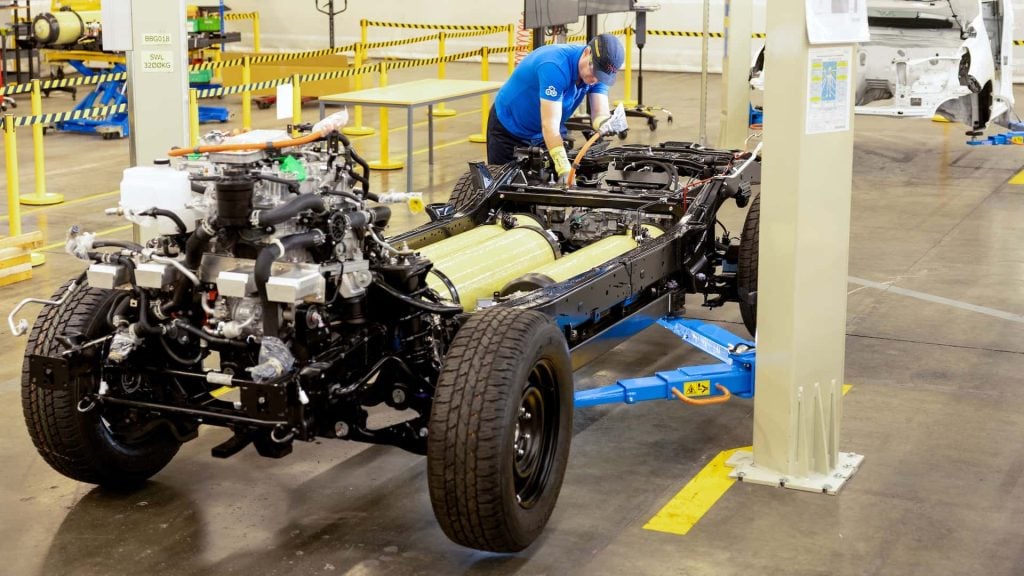In a move that could reshape the landscape of green vehicles, Toyota has rolled out its first-ever Hilux Hydrogen Fuel Cell Prototype, assembled at the Burnaston plant in Derby, England. This initiative, backed by the UK government and in partnership with a consortium, aims to create 10 such vehicles by year-end.
Toyota is planning to conduct rigorous tests on the fuel cells for future applications
Borrowing technology from its sibling, the Toyota Mirai, this Hilux version boasts an impressive range of 365 miles between hydrogen refills. To put it in context, the traditional diesel engine version available in Australia can travel 715 miles between stops. However, this new model’s significance lies not just in mileage but in demonstrating that hydrogen fuel can be a rugged and reliable alternative.

What sets this model apart is the strategic placement of its hydrogen tanks, neatly fitted between the frame rails where the cabin usually resides. The battery sits at the back, and the rest of the fuel cell gizmos take the space generally reserved for combustion engines under the hood.
The project kicked off as a feasibility study in early 2022, and by June 2023, the first prototype was born. In a nod to Hilux’s legacy of toughness, Toyota plans rigorous tests focusing on safety, functionality, and durability for these 10 prototypes.
This venture comes on the heels of Toyota’s other explorations into fuel-cell tech. Last December, the electric Hilux Revo BEV Concept was unveiled without much detail, but with a clear message that Battery Electric Vehicles (BEVs) aren’t the sole path to carbon neutrality. Additionally, the company hinted at a light-duty pickup fuel cell project with Isuzu and Hino and left the door open for a possible hydrogen-powered Land Cruiser. This move aligns with Toyota’s belief that the journey to a greener future is not a one-way street.
RELATED:
- Introducing the BMW i7 Protection: The First Electric Vehicle That Can Withstand Gunfire and Explosives
- Xiaomi Mijia Electric Kettle N1 launched for a starting price of 69 yuan ($10)
- Best Garmin Smartwatches 2023 – Enduro, Instinct, Fenix, Venu & more
(Via)







